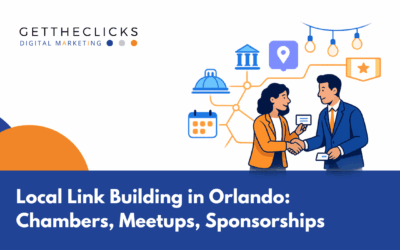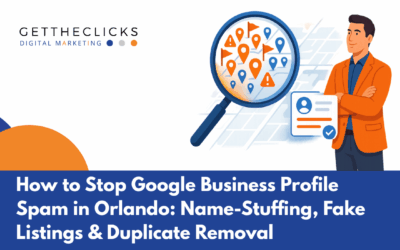Most businesses know about the importance of SEO for their websites, but the term “alt tags” may not be as familiar. Your website must be fully optimized so that you can reach as many potential customers as possible. One way to ensure your website is fully optimized is to employ alt tags and SEO best practices that top SEO companies Tampa follow.
What is Alt Text?
In general, the terms “alt text” and “alt tags” are misnomers. The truth is that they’re more attributes. To keep things simple, though, they’re often referred to as alt text.
Alt text is used to describe an image and its function on a page. The text is written within HTML and utilized by screen readers to let a person know what an image is. Visually impaired people often use screen readers to help them better understand what is on the page.
If an image fails to load, the alt text will be displayed in its place. It describes what the image is supposed to be and provides a bit more context than a blank space.
Alt text provides additional SEO benefits. Google does place importance on alt text in terms of its SEO algorithm. Although they have not disclosed exactly what they consider for SEO, we know that alt text plays a part in helping search engines understand images and how they relate to a website.
Why is Alt Text Important?
Just like SEO, alt text is an essential aspect of optimizing your website. Without it, Google’s algorithm might punish your website, and you could lose some points for accessibility.
Alt text makes your website accessible to those with a visual disability, but it also benefits your website through SEO and providing context for an unloaded image.
Alt text is important, but it doesn’t have to be written for every image on your website. The purpose of alt text is to provide context and describe the function of an image. So if an image on your website doesn’t serve a particular function, you don’t have to write alt text for it.
An example of an image that would not need alt text is an icon symbol. Say you have a button that reads “Home Décor” and a little symbol of a house. You don’t need to include alt text for the symbol as it doesn’t serve any particular purpose. Similar images that don’t serve a purpose can be ignored as well.
Although specific images don’t need it, you should still write an empty alt text. This helps both search engines and screen readers know that the image does not play an essential part in what is displayed on the webpage.
Here are some other ways alt text helps your website and why it’s crucial.
How Alt Text Helps Your Website SEO
1. Alt Text and Image SEO
Alt text is tied to SEO, particularly image SEO. By writing clear alt text for your images, Google knows which images to preview in a search result. If your website is pulled up in a query and search engines want to show a snippet, the alt text will determine which image is relevant and should be included.
When your images include descriptive alt text, they’re much more likely to be included in Google images. Even if the main goal of your website is not to share images, image optimization can still help you reach a broader audience. Overall, alt text can help extend your reach.
2. Accessibility
As mentioned, alt text can significantly improve accessibility for users that are visually impaired. Alt text describes the image to the user and includes a description of the function. Ensuring that your website uses alt text and is accessible also means that your site is ADA compliant.
Millions of Americans use screen readers every day and having a website that is ADA compliant makes sure that you’re reaching them.
3. Better Quality of Content
Using alt text can improve the quality of your content. When an image fails to load for whatever reason, the alt text is displayed. Even though a user may not read it, it can still inform them about the image so that they don’t feel like they are missing an essential aspect of your website.
That being said, your content is better only if you don’t stuff your alt text with keywords. Instead, your alt text should have a clear description so that any user can understand what it is for.
Best Alt Text Practices
To create useful alt text for your website, there are some dos and don’ts that you should follow. Here are some tips you can follow to write good alt text.
1. Be Specific
Write your alt text to be specific and concise. You shouldn’t write more than one sentence and if you do, you’re probably writing too much. Limit yourself to 125 characters as that’s as long as most screen readers will read.
A great way to make sure you’re being specific without saying too much is to imagine how you might briefly describe the image to someone.
2. Don’t Say “Image Of…”
A screen reader will already know how to distinguish between regular text and the image’s alt text. However, it can be irritating for those who use screen readers to hear “Image of…” for every image. This is particularly true for websites that are image-heavy.
Your alt text should go directly into describing the image. For example, instead of writing “Image of a soccer player in the rain”, write “Lionel Messi playing at Camp Nou stadium in the rain”. This gives the user a much better idea of the image.
3. Avoid Repeats
If you already have a side text that describes your image, you don’t need to include alt text. It’s better to avoid alt text entirely if it means repeating something your users will have already heard or read.
4. Only Use it For Images With a Purpose
If an image is just there for decoration, you don’t need to include alt text. It can be distracting to include alt text in some circumstances. Unless the image has a purpose and is necessary to the content, don’t include alt text for it.
5. Be Careful With Keywords
Keywords are essential for both SEO and alt text, but you should use them sparingly. Just like the rest of your content, you don’t want to spam your alt text with keywords. You might not realize it, but Google will recognize keyword stuffing even in alt text.
As with other SEO practices, you don’t want to flood your alt text with keywords. Even if you can make it look good and flow, Google will recognize it for what it is and you may be penalized for it.
More SEO Best Practices
As you use alt text, you should incorporate other SEO practices to get the full benefit of a well-optimized website. Here are some suggestions and best practices to follow when it comes to SEO.
1. Have Clean Title Tags
Title tags let Google know what a specific page on your website is about. They also tell Google search results if the content included is relevant to the keyword searched or matches the search intent. Just like the title of each post, your title tag should be unique to each page.
When it comes to writing better title tags, make sure you aren’t making duplicate tags. Your title tags should be short and have clear lines between keywords and your brand name.
2. Write Compelling Meta Descriptions
Your meta description is the short description that shows under your website’s link in a search query. It is displayed directly below the title tag and will help users know how valuable your website will be to them.
Although meta descriptions don’t affect your rank in the search results, they can determine how many users click on your website.
Keep your meta description short, anywhere between 150 and 160 characters. They should also be different for each page, so avoid duplicating them.
3. Make Content Understandable
Ensuring that your content is understandable isn’t just limited to how well it’s written. This extends to how easy it is to read and how well it flows.
You should never have a large block of words without a paragraph break. This will lower its readability.
Always include paragraph breaks every three to five sentences. To help users find information more accessible, add bullet points.
Conclusion
When you optimize alt text and other SEO-related components on your website, there can be a significant influence on how well your website does in search queries. By following the image optimization and SEO best practices above, your website will start to rank better and become more easily accessible.





